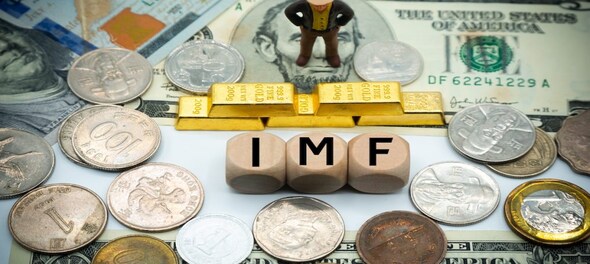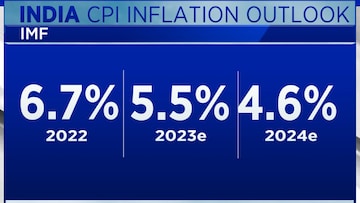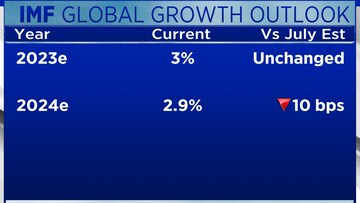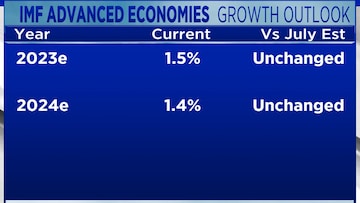
The International Monetary Fund (IMF) has raised India’s growth projection for the current financial year on the back of a stronger-than-expected consumption during April-June quarter.
“Growth in India is projected to remain strong, at 6.3 percent in both 2023 and 2024, with an upward revision of 0.2 percentage point for 2023, reflecting stronger-than-expected consumption during April-June,” the IMF said in its latest World Economic Outlook report for October, released on Tuesday during the ongoing IMF Annual Meetings in Marrakech, Morocco.

This compares with Reserve Bank of India’s projection of a 6.5 percent GDP growth for India for the current financial year, 0.2 percentage points higher than IMF’s latest forecast.
Over the medium term, the fund has forecast a 6.3 percent GDP growth for India by FY29. India’s consumer price inflation (CPI) is seen easing from an average of 6.7 percent in 2022 to 5.5 percent in 2023 and 4.6 percent in 2024, the IMF said.

Global Growth Outlook
The global economy is limping along, not sprinting, the International Monetary Fund (IMF) said in its report. It expects the world economic growth to slow from 3.5 percent in 2022 to 3 percent this year and 2.9 percent next year, a 0.1 percentage point downgrade for 2024 from its estimates released in July.

“The global economy continues to recover from the pandemic, Russia’s invasion of Ukraine and the cost-of-living crisis. In retrospect, the resilience has been remarkable. Despite war-disrupted energy and food markets and unprecedented monetary tightening to combat decades-high inflation, economic activity has slowed but not stalled. Even so, growth remains slow and uneven, with widening divergences,” Pierre-Olivier Gourinchas, the Economic Counselor and Director of the Research Department at IMF said in a blog.
For advanced economies, the expected slowdown is from 2.6 percent in 2022 to 1.5 percent in 2023 and 1.4 percent in 2024, amid stronger-than-expected US momentum but weaker-than-expected growth in the euro area. Emerging market and developing economies are projected to have growth modestly decline, from 4.1 percent in 2022 to 4.0 percent in both 2023 and 2024, with a downward revision of 0.1 percentage point in 2024, reflecting the property sector crisis in China, the fund said in its report.

“Forecasts for global growth over the medium term, at 3.1 percent, are at their lowest in decades, and prospects for countries to catch up to higher living standards are weak,” said the IMF.
Three forces are at play, noted Pierre-Olivier Gourinchas in a blog:
1. The recovery in services is almost complete and the strong demand that supported services-oriented economies is now softening.
2. Tighter credit conditions are weighing on housing markets, investment, and activity, more so in countries with a higher share of adjustable-rate mortgages or where households are less willing, or able, to dip into their savings. Firm bankruptcies are increasing in some economies, although from historically low levels. Countries are now at different points in their hiking cycle: advanced economies (except Japan) are near the peak, while some emerging market economies that started hiking earlier, such as Brazil and Chile, have already started easing.
3. Inflation and economic activity are shaped by last year’s commodity price shock. Economies heavily dependent on Russian energy imports saw a steeper increase in energy prices and a sharper slowdown. The passthrough from higher energy pri
(Edited by : Asmita Pant)
First Published: Oct 10, 2023 1:30 PM IST
Check out our in-depth Market Coverage, Business News & get real-time Stock Market Updates on CNBC-TV18. Also, Watch our channels CNBC-TV18, CNBC Awaaz and CNBC Bajar Live on-the-go!


Supreme Court dismisses plea seeking postponement of CA exams; details here
Apr 29, 2024 2:29 PM
Just 8% women candidates contested first two phases of Lok Sabha polls
Apr 29, 2024 12:00 PM
The sexual assault case against Prajwal Revanna — here's what we know so far
Apr 29, 2024 11:36 AM
Repolling underway at one polling booth in Chamarajanagar LS segment in Karnataka
Apr 29, 2024 10:32 AM

